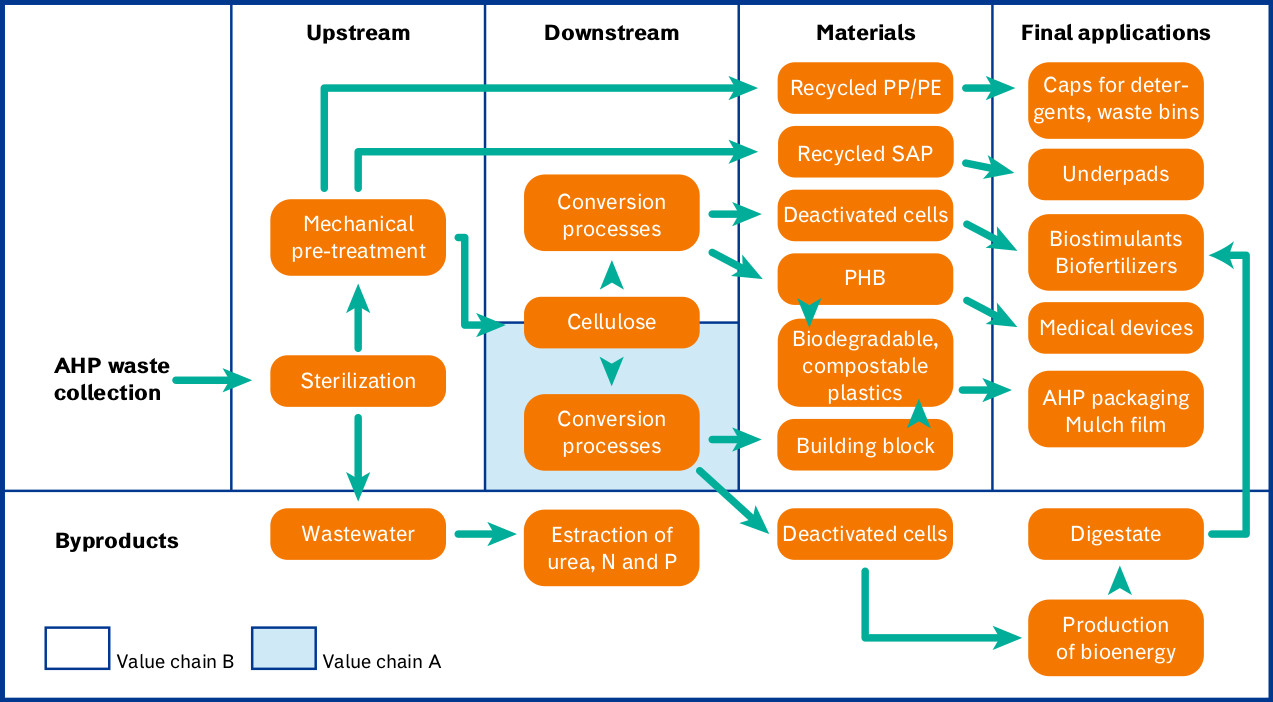
AHP waste, which is currently considered a non-recyclable fraction, represents between 2-4% of the total Municipal Solid Waste. What if this waste could be converted into other products, avoiding incineration and reducing greenhouse gases emissions?
Fater in the last years has developed and patented an innovative recycling solution for post-consumer AHP waste, already demonstrated at 1,500 t/year in Lovadina di Spresiano (TV – Italy) in cooperation with the waste operator Contarina

Effectiveness of AHP pretreatment
AHP feedstock availability
Demonstration of value chain A
Demonstration of value chain B
Products and coproducts validation
Integrated biorefinery up and running
